leather & gloving
WJ & EG ricketts Ltd
Glove Manufacturers
Coming from a long line of glovers, William Ricketts was a publican who ran the Duke of Wellington in Sherborne Road, but was also a glove manufacturer. He was a partner in the glove manufacturing company of Hawkins, Jesty & Ricketts Ltd with a factory in Higher Kingston that had earlier belonged to glove manufacturer Henry Bryant Phelps and later by his younger brother's company, Robert Phelps & Co.
Four of William's sons were glovers; William, Ernest, Albert and Frank. Ernest, at least (but most likely all the sons), served an apprenticeship in his father's factory. In 1910 Ernest established his own glove manufactory in newly-built Manor Road. The building, photographed below, was later to become the premises of the Raymond brothers. In the same year Ernest's older brother William bought a one-acre site in Addlewell Lane and set up his own leather dressing business.
Ernest closed down his Manor Road factory in 1925 in order to join his brother William in partnership. The new company was WG & EG Ricketts Ltd. the company also owned a tannery in Stars Lane, although this was destroyed by fire in 1931.
Ernest died in 1935 and the former partnership was incorporated as a private limited company in 1938. During the Second World War the factory was damaged by two bombs in October 1940, although a limited amount of work continued to be carried out. Fortunately neither bomb - one in the leather dressing yard, the other behind houses in Park Street - exploded, although damage was caused as seen in the photographs below. After the war Ernest's son Arthur joined the firm.
WJ & EG Ricketts & Co, Leather Dressers of Addlewell Lane were listed in Kelly's Directory of 1935 but were most often listed as Glove Manufacturers in a range of other directories up to and including Kelly's Directory of 1974.
William Ricketts died in 1960 and Arthur Ricketts took control of the company which by this time had become one of Yeovil's leading glove manufacturers and leather dressers, their tannery even being larger than Pittard's. By 1972 the workforce of both glove making and leather production sides of the company totalled 108 with an additional 100 outworkers. The company, at this time, also owned a large factory at Loughborough and a smaller factory at Somerton.
By 1980 it was entirely apparent that the whole of the Yeovil glove trade was in a severe decline and, as a consequence, Arthur Ricketts decided to close the company down while it was still a viable concern.
In 1983 the WJ & EG Ricketts & Co glove factory in Addlewell Lane was demolished and the Central Acre development was built on the site. This also made available more land and Wincanton Garages (Yeovil) Ltd acquired land at the corner of Summerhouse Terrace and used it as a used car sales site.
GALLERY

This colourised photograph of about 1965 shows Hawkins, Jesty & Ricketts' glove factory in Higher Kingston, on the north side of the road opposite Kingston Manor House. At least Ernest served his apprenticeship here as, most likely, did his brothers.
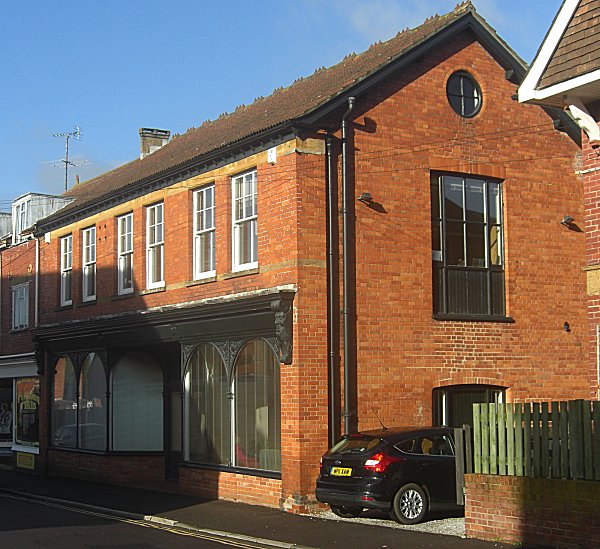
Ernest Ricketts' glove factory opened in 1910. After he vacated the premises in 1925 the Raymond brothers moved in and added the shop-front with the carved-face supporters. Next door, at far left, is just glimpsed what had been the Morley brothers' lighting shop. Photographed in 2013.
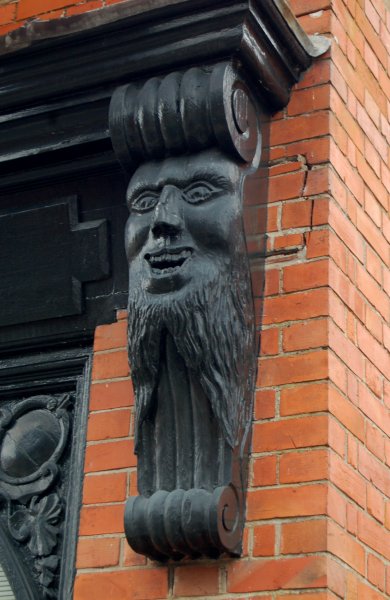
.... and in case you've never seen them, this is one of the two carved faces.
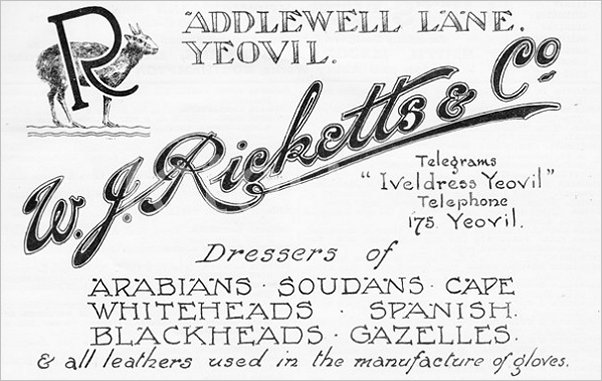
An advertisement of 1926 for WJ Ricketts & Co (before EG joined).
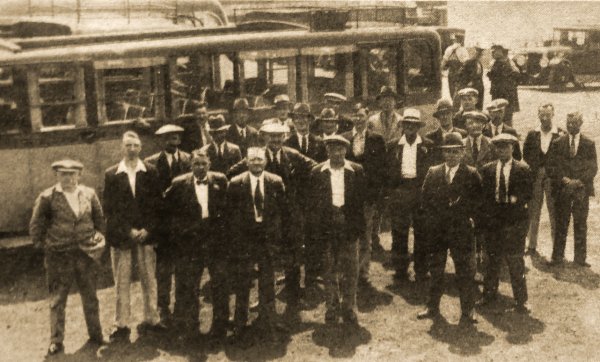
Courtesy of
Colin Haine
A WJ & EG Ricketts & Co staff outing, most likely during the 1920s judging by the charabanc and car in the background, as published in the Western Gazette.
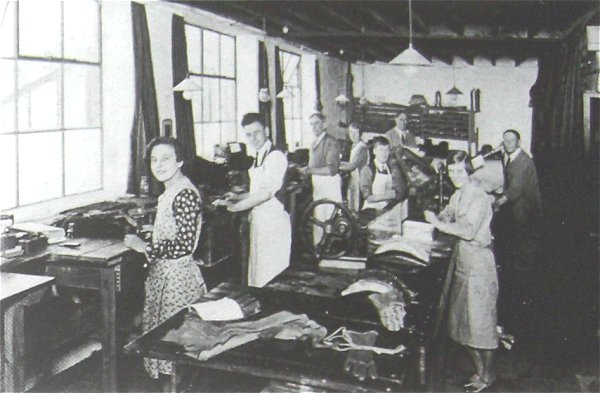
An inside photograph of the Addlewell Lane glove factory's machine shop, taken in the early 1930s.

This
photograph
features in
my 2024 book "Yeovil,
the Home
Front,
1939-1945"
Bomb damage at the Addlewell Lane factory in 1940.
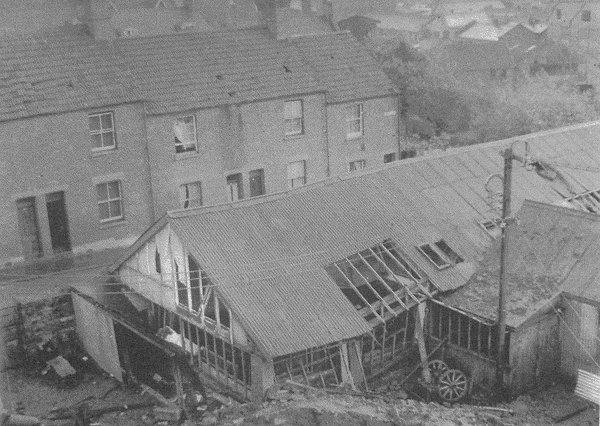
Bomb damage at the Addlewell Lane factory in 1940. The building seen here is the building with the ladder resting on the roof at right in the photograph above.
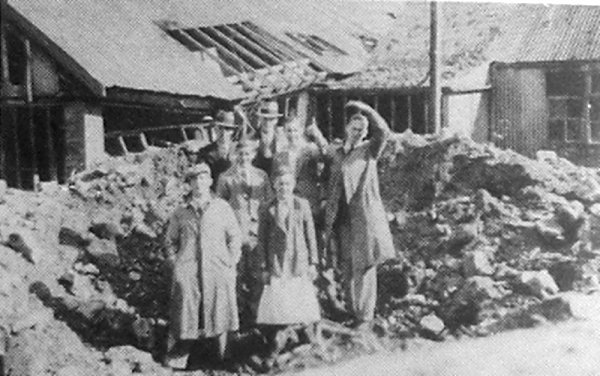
Cheerful workers of WG & EG Ricketts Ltd stand by the bomb damage.
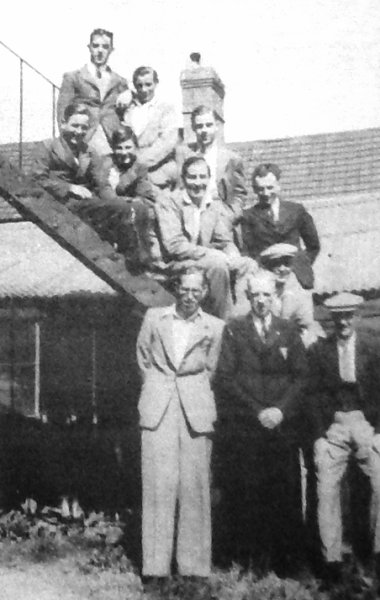
Some workers at the WG & EG Ricketts factory pose for a lunchtime photo, probably taken during the 1950s.
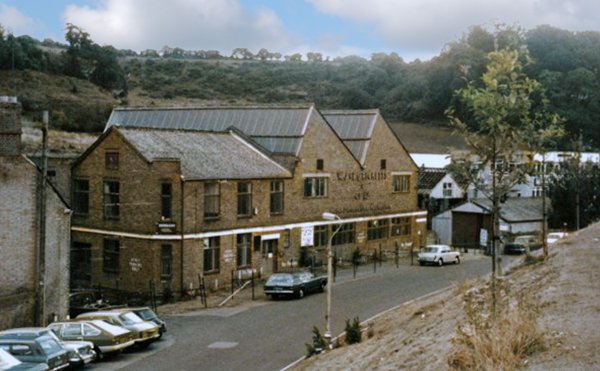
Courtesy of
Roger Froude.
This
photograph
features in
my book "Now
That's What
I Call
Yeovil"
The WJ & EG Ricketts & Co factory in Addlewell Lane. Photographed in 1983, by which time the company had been closed and the factory stood empty.
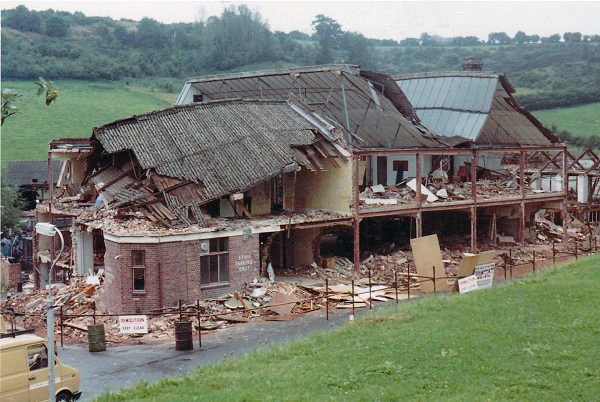
Courtesy of
Roger Froude
Demolition of the WJ & EG Ricketts & Co factory in Addlewell Lane. Photographed in 1983.
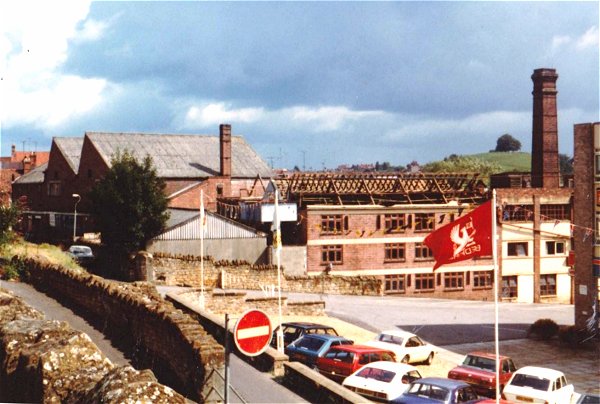
Courtesy of
Roger Froude
Demolition begins on the WJ & EG Ricketts & Co factory. Photographed in 1983 from Park Street.
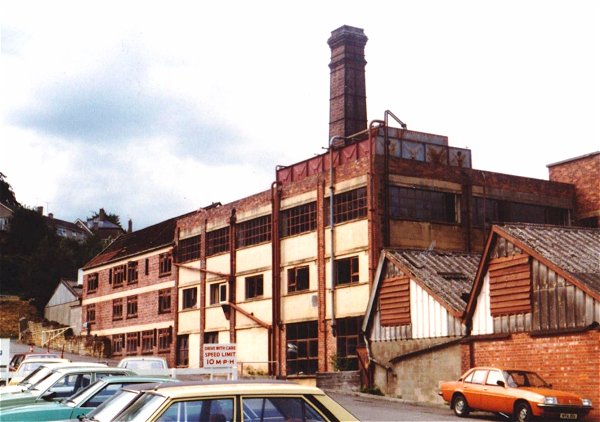
Courtesy of
Roger Froude
The rear of the factory, Park Street is seen at top left. Photographed in 1983.
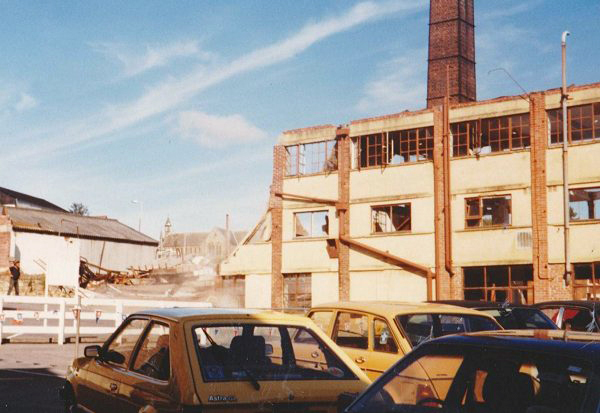
Courtesy of
Roger Froude
Demolition continues apace. Photographed in 1983.
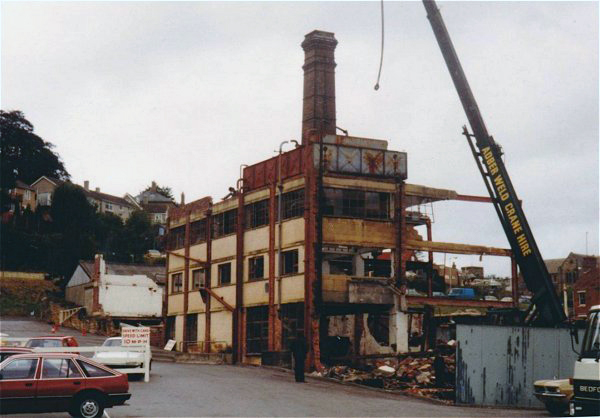
Courtesy of
Roger Froude
A mobile crane moves in to remove the huge water tank from the roof.. Photographed in 1983.
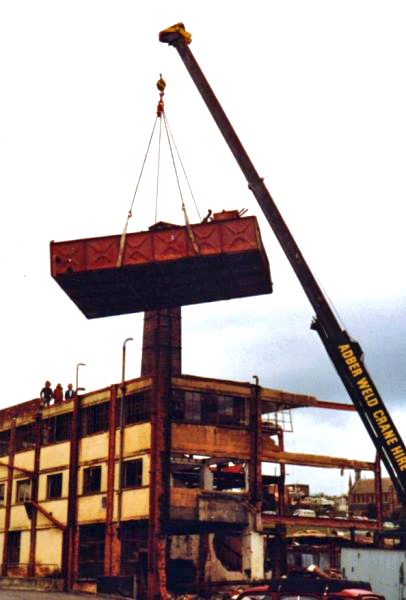
Courtesy of
Roger Froude
The water tank being lifted from the roof. I wonder what that weighed when it was full. Photographed in 1983.
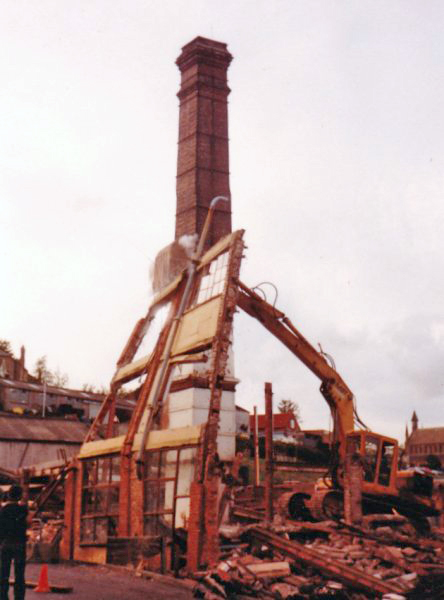
Courtesy of
Roger Froude
Photographed in 1983, the last bit of wall comes down - leaving only....
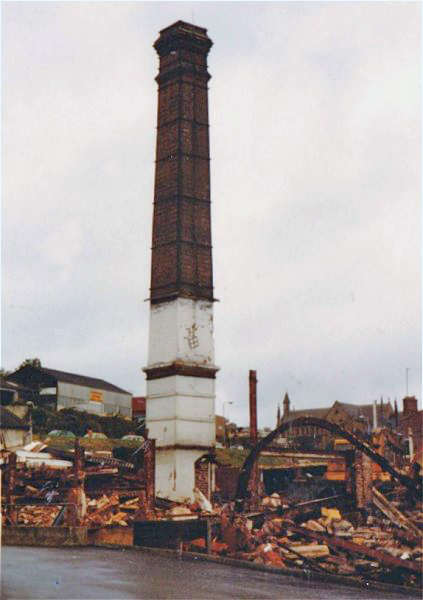
Courtesy of
Roger Froude
.... the chimney. Photographed in 1983.
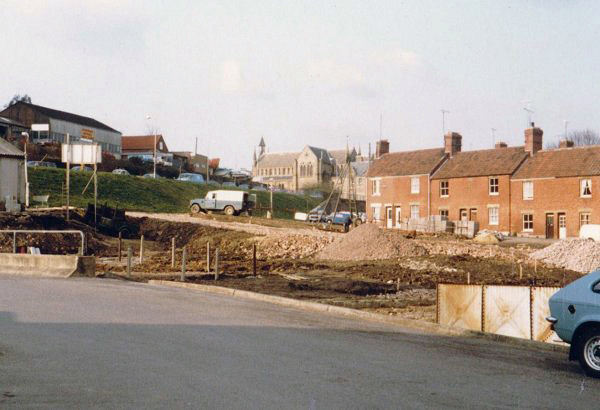
Courtesy of
Roger Froude
The site cleared, ready for the Central Acre development. Photographed in 1983 looking north with Park Street at high level left, the Holy Trinity church at centre and the remaining houses of Belmont Street at right.
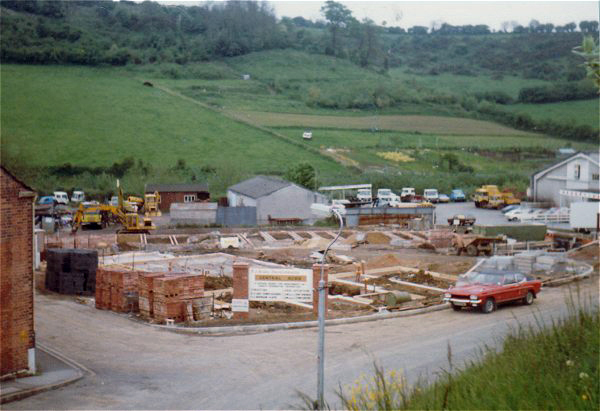
Courtesy of
Roger Froude
The site cleared and Central Acre development being laid out. The red car is in Addlewell Lane and Belmont Street runs off left. Note the absence of the ski slope in the background. Photographed in 1983.